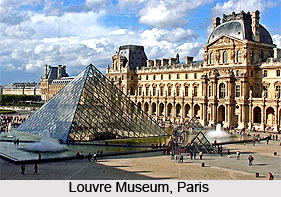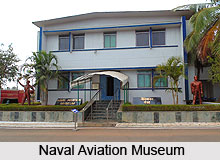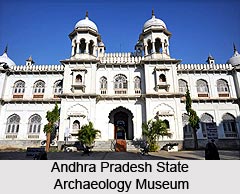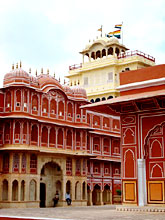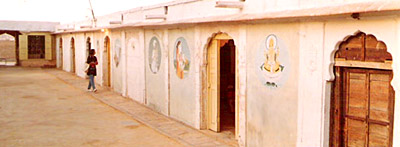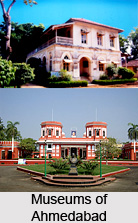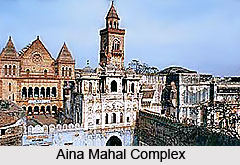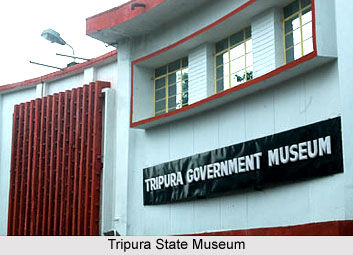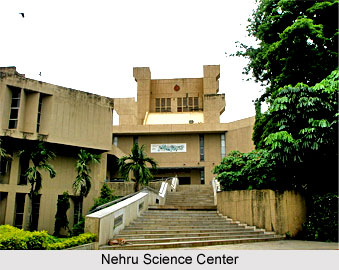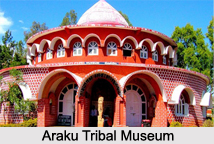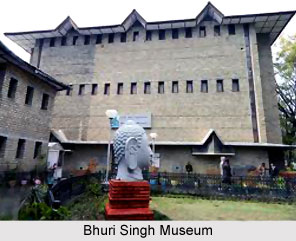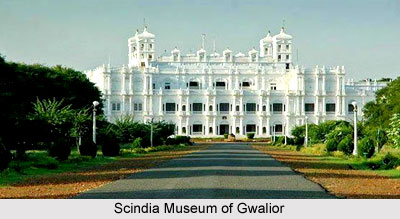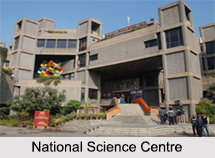 Established in the year 1922, the National Science Centre is a science museum located in Delhi and is part of the National Council of Science Museum (NCSM). The National Science Centre is an autonomous body under the India"s Ministry of Culture and is strategically situated in the vicinity of the commercial exhibition hub of Pragati Maidan Complex.
Established in the year 1922, the National Science Centre is a science museum located in Delhi and is part of the National Council of Science Museum (NCSM). The National Science Centre is an autonomous body under the India"s Ministry of Culture and is strategically situated in the vicinity of the commercial exhibition hub of Pragati Maidan Complex.
Description of National Science Centre
The zonal headquarters of the National Council of Science Museum, the National Science Centre was conceived, designed, built and made operational in 1992. It was inaugurated on 9th January 1992 by the then Prime Minister of India, P.V. Narasimha Rao. The building was designed by noted Indian architect Achyut Kanvide. The current director of the science museum is Rama Sarma Dhulipati, it was under him and few other former directors that the centre organised socially relevant activities like workshops on breast cancer awareness, life skill development for underprivileged children, vocational training for destitute women and children, basic first aid training, science related lectures, etc.
Galleries of National Science Centre
With 8 levels, the National Science Centre has about seven galleries and many sections for all age groups. The entry plaza to the Centre welcomes its visitors with a huge exhibit spanning over 4 floors, with the standalone exhibit called the Energy balls, in which nylon balls which are 6 inches in diameter, are lifted to a height of 13 m and are allowed to roll down. Besides, there are small but attention grabbing exhibits like the magic tap which apparently gushes forth water suspended in space without any inlet, a harp, where merely moving ones hands creates music, and a suitcase which curiously resists being twisted about its handle.
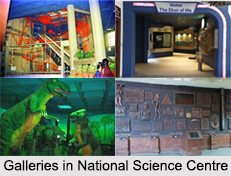 Then there is “Our Science and Technology Heritage Gallery†which shows the change of art and literature over time with a very rich scientific and technological culture. Evidence from 20th century ancient Sanskrit texts reveals the concepts of matter, atomism and cosmic evolution. This gallery is the latest in the Centre and was inaugurated by the secretary to the Ministry of Culture, Shri Jawhar Sircar on 21st October, 2009.
Then there is “Our Science and Technology Heritage Gallery†which shows the change of art and literature over time with a very rich scientific and technological culture. Evidence from 20th century ancient Sanskrit texts reveals the concepts of matter, atomism and cosmic evolution. This gallery is the latest in the Centre and was inaugurated by the secretary to the Ministry of Culture, Shri Jawhar Sircar on 21st October, 2009.
Next is a gallery on Human Biology - the miracle of Human Life. The gallery aims to portray the human body in all its aspects: anatomical, physiological, biochemical, structural, functional and systemic. From here, the visitor can move on to the next gallery on prehistoric life featuring several life sized and scaled animated robotic models of dinosaurs and other long extinct creatures in their natural ambience. The supporting panel exhibition provides ample information about origin of Earth, geological changes that occurred on earth through ages, evolution of atmosphere, origin of life in water, spread of life on land, early life forms, and early mass extinctions and so on.
For the younger visitors, there is the Fun Science gallery with many interactive hands – on exhibits that explains the fundamentals of science. Other than these, there is the Information Revolution gallery, where the story of evolution of Communication Technology over past 6000 years in India is told in a large exposition. While moving through time, one experiences the relation between technology and culture through history in this show. The gallery showcases the earliest as well as the latest form of communication and their impact on society.
The Emerging Technologies gallery is the latest addition to the Centre and portrays the application of 9 different technologies like Space Technology, Information and Communication Technology, Medical and Biotechnology, Oceanography and Earth Sciences, Agricultural Technology, Material Science, Nanotechnology, Energy and Transportation Technology.
Science shows along with 3D shows are hosted in the Centre that is both educational and entertaining to watch.
Visiting Information on National Science Centre
The nearest railway station is located about 6.4 km from the Centre and the Indira Gandhi International Airport is situated at a distance of 16 km from the science museum.
